La città di Nara e i suoi cervi, una meta imperdibile
Continuiamo il nostro viaggio nel Giappone e oggi ci spostiamo a Nara. Capitale dell’omonima prefettura, la città di Nara è situata nella regione del Kansai. Situata a nord della prefettura, i suoi confini sono adiacenti a quelli della prefettura di Kyoto.
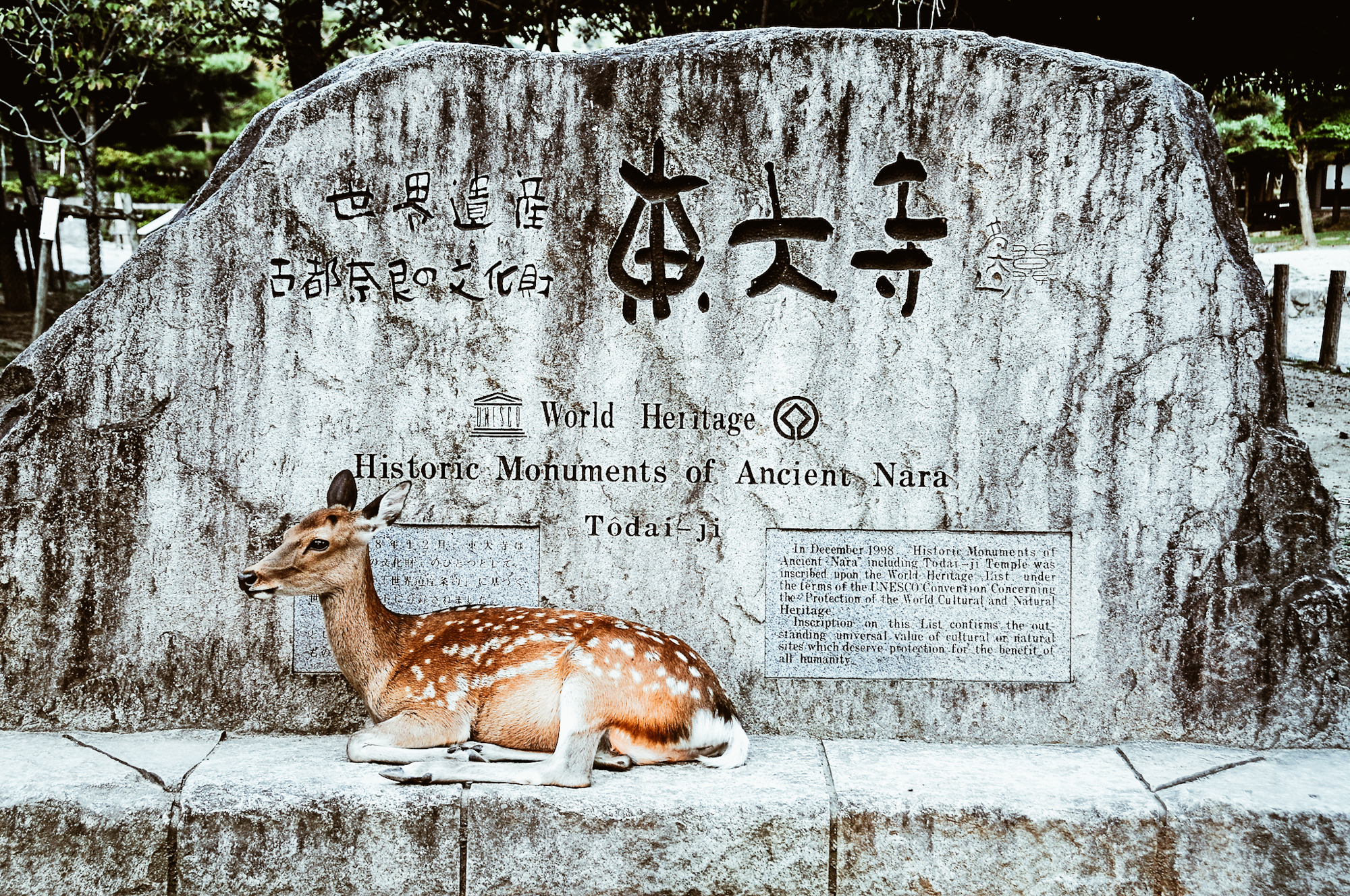

photo credits: lensonjapan, Blondinrikard Fröberg
Con otto templi, rovine dei periodi passati e i famosi cervi, Nara rimane non solo una delle città più belle del Giappone ma anche una delle mete più ambite dai turisti. Durante il periodo Nara, la città era la capitale del Giappone e l’imperatore viveva qui prima di spostare la sede a Kyoto.
Il periodo Heian
Durante questo periodo, sono state proposte una numerosa fonte di teorie per l’origine del nome Nara.
Nara e La teoria Nihon Shoki
The Chronicles of Japan, il secondo libro più vecchio sulla storia classica giapponese, dice che la parola Nara deriva da narasu (essere piatti, a livello). Secondo questa teoria, nel settembre del decimo anno dell’Imperatore Sujin, alcuni ribelli scalarono la Nara-yama. Qui con le forze imperiali, si sono uniti per distendere alberi e piante ed è per questo che la montagna è chiamata Nara-yama. Trattandosi della testimonianza più antica, ha anche dei riferimenti nella cultura folkloristica. Essa infatti è considera l’etimologia storica da molti studiosi.

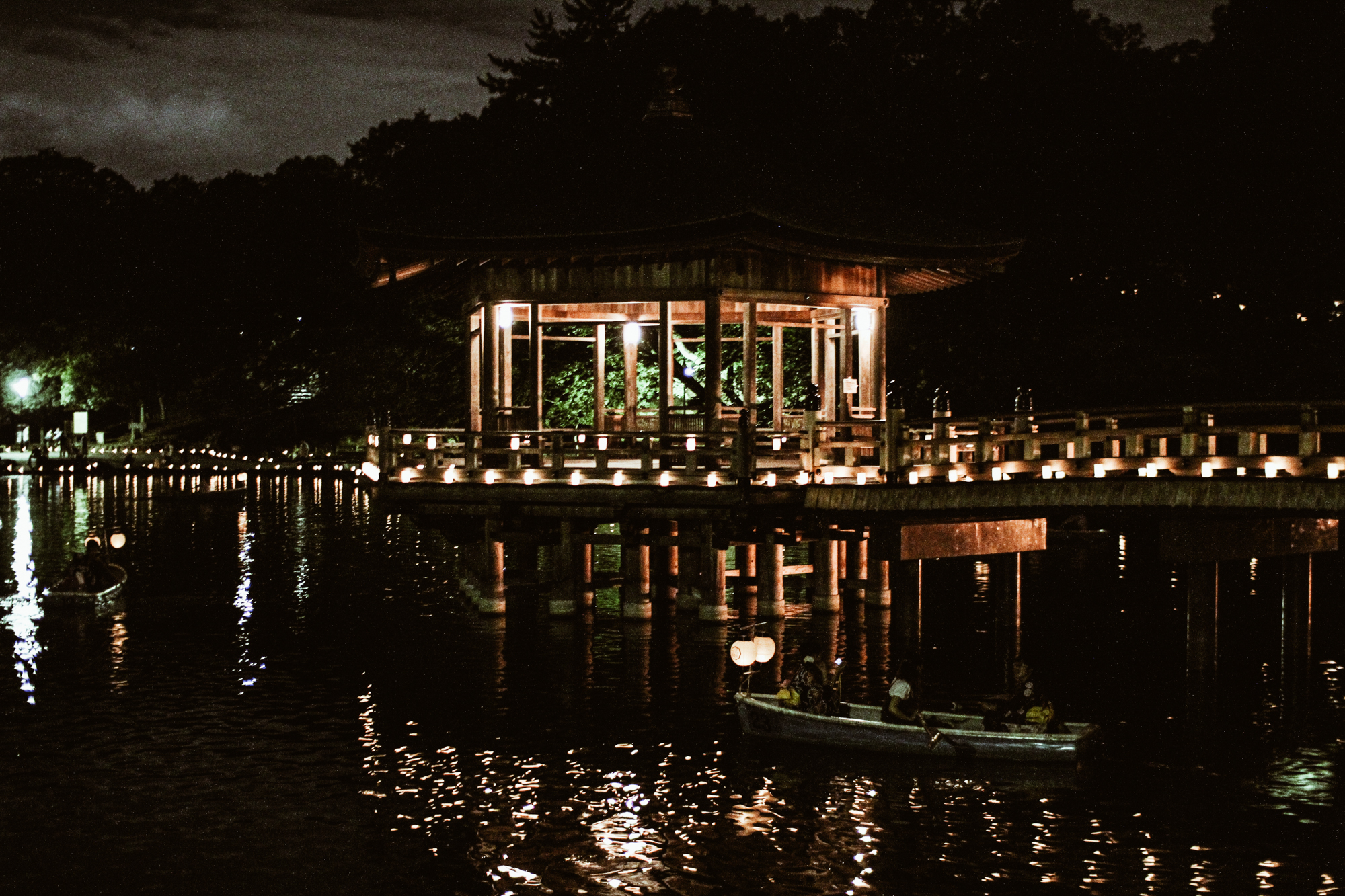
Nara e la teoria della “terra piatta”
Pensata da Kunio Yanagita nel 1936, al momento questa è la teoria più accettata. Questa proposta attesta infatti che “la conformità topografica di un area relativamente piana fra una montagna chiamata Taira nel giappone orientale e hae nel sud di Kyushu, si chiama naru nella regione Chūgoku e Shikoku del Giappone centrale. Questa parola da origine al verbo narasu e all’avverbio e aggettivo narushi”.
Inoltre, questa teoria è supportata anche da alcune parole inserite nei dialetti che si riferiscono ad un area pianeggiante con il nome di naru e naro. A maggiore supporto di questa proposta, troviamo anche l’aggettivo narui, che non è strettamente negli standard giapponesi, ma lo troviamo in utilizzo nelle aree centrali del paese. Il significato di questa parola corrisponde infatti a “gentile”, “pendenze gentili” o “facile”.
Ad ulteriore sostegno di questa sua teoria, Yanagita porta il fatto che molti di questi nomi sono stati scritti con il kanji 平 (“piatto”). Ovviamente il fatto che storicamente Nara era scritto con gli ideogrammi 平 o 平城 va ad ulteriore supporto di questa teoria.
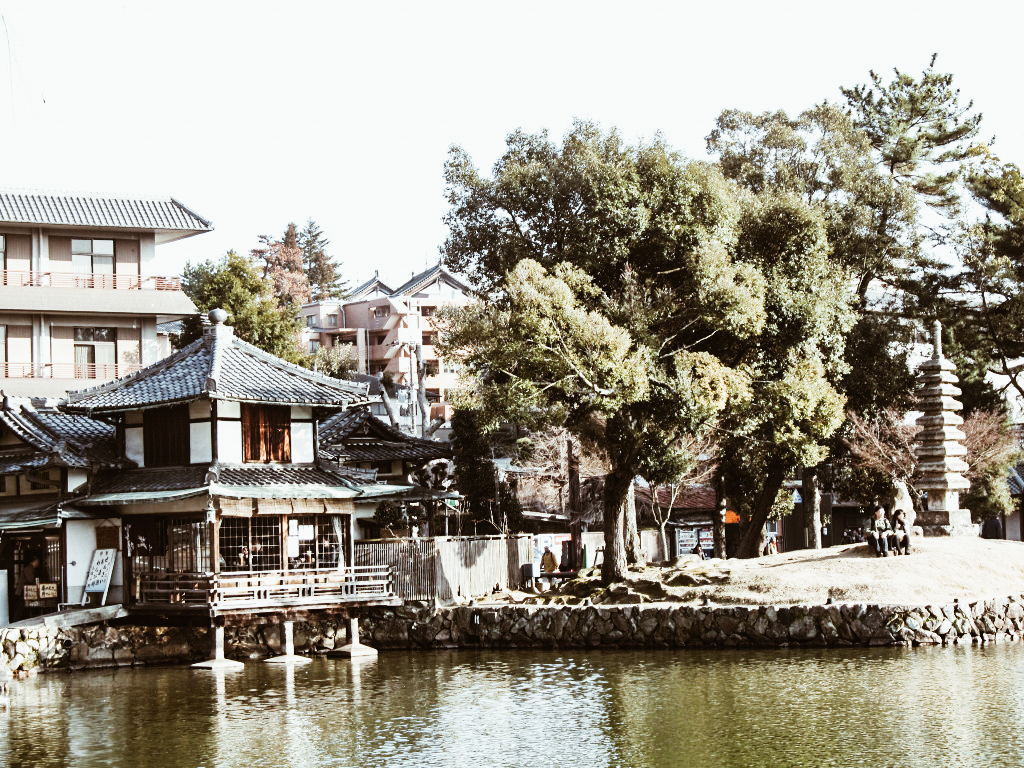
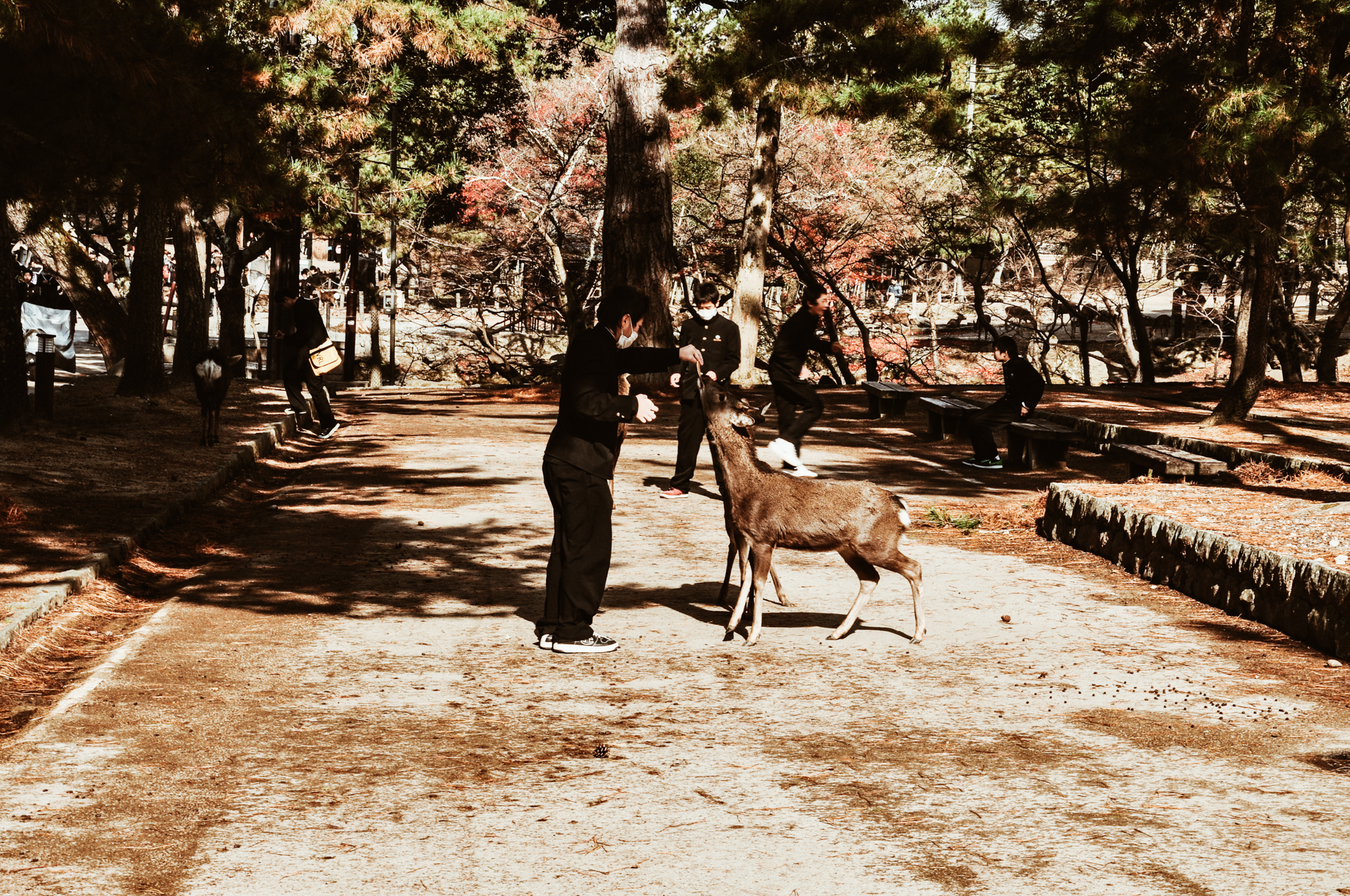
photo credits: chrizyshot, pantoniades
Nara e le querce
Un’altra opinione comune è che Nara derivi dall’ideogramma di quercia (楢). Suggerita da Yoshita Togo, possiamo trovare questa pianta chiamata con questo nome sin dal settimo e ottavo secolo. Infatti, Narahara ad Harima (circa il Kasai di oggi) deriva dall’albero nara, che potrebbe supportare questa teoria.
Il nome Nara preso in prestito dalla Corea
Questa è una curiosità quasi sorprendente. In coreano infatti, nara (나라) significa nazione, regno. Matsuoka Shizuo sosteneva che questa potesse essere una valida origine per il nome della città. Tuttavia non ci sono poche o quasi nessuna traccia del coreano antico, e non c’è alcuna prova che questa parola esistesse nel settimo secolo.
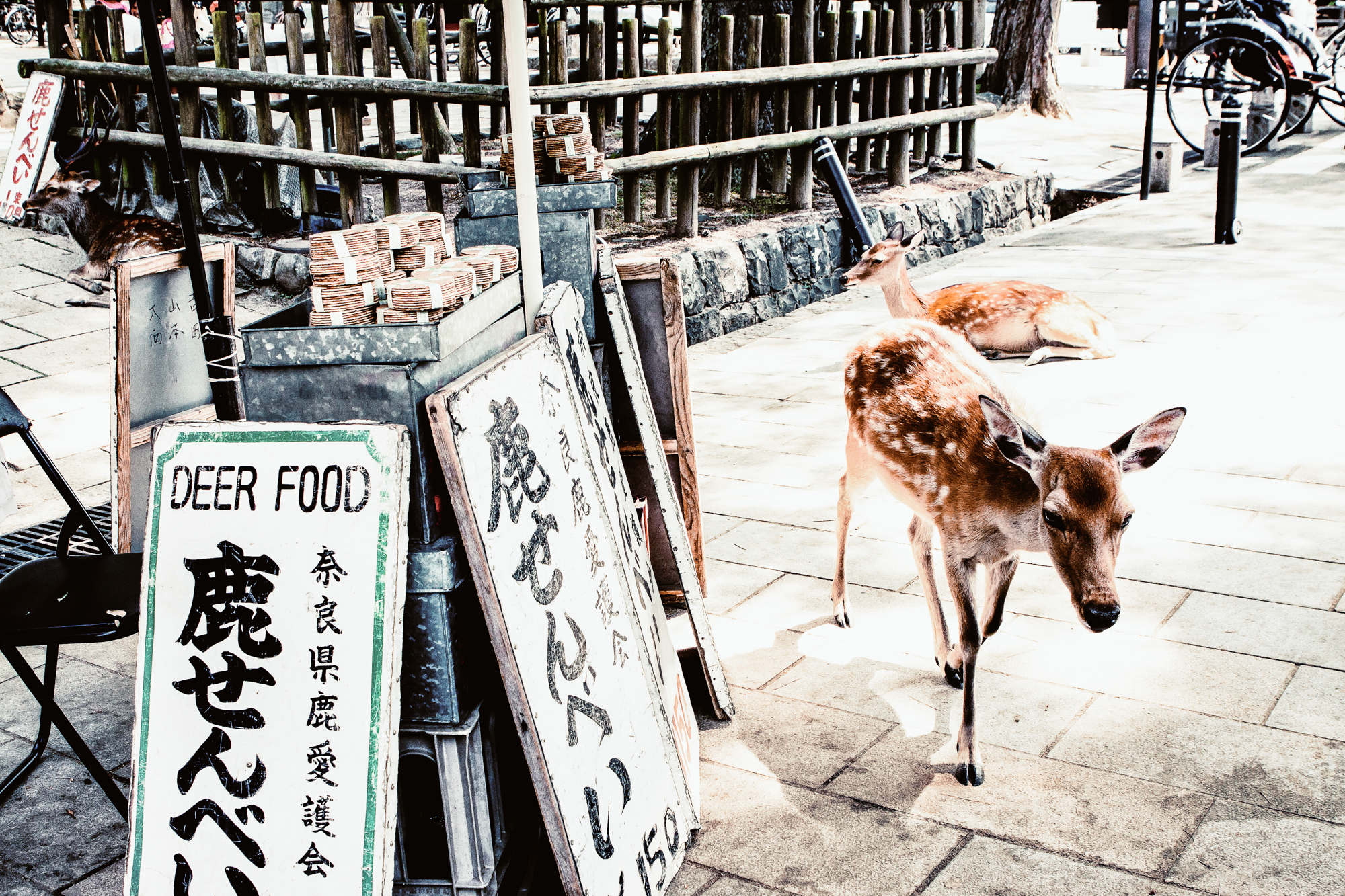

photo credits: Jirka Matousek, Rhett Sutphin
Le origini
L’imperatrice Genmei nel 708 decise di spostare la corte imperiale nella nuova capitale, Nara. Conosciuta come Heijō o Heijō-Kyō, la città fu la prima capitale permanente del Giappone fino al 784. Successivamente la capitale fu spostata a Nagaoka per forzare le elite metropolitane e nuove tecniche di dinastie che si stavano diffondendo nel paese. Con lo spostamento in questa città, abbiamo anche la nascita dell’omonimo periodo.
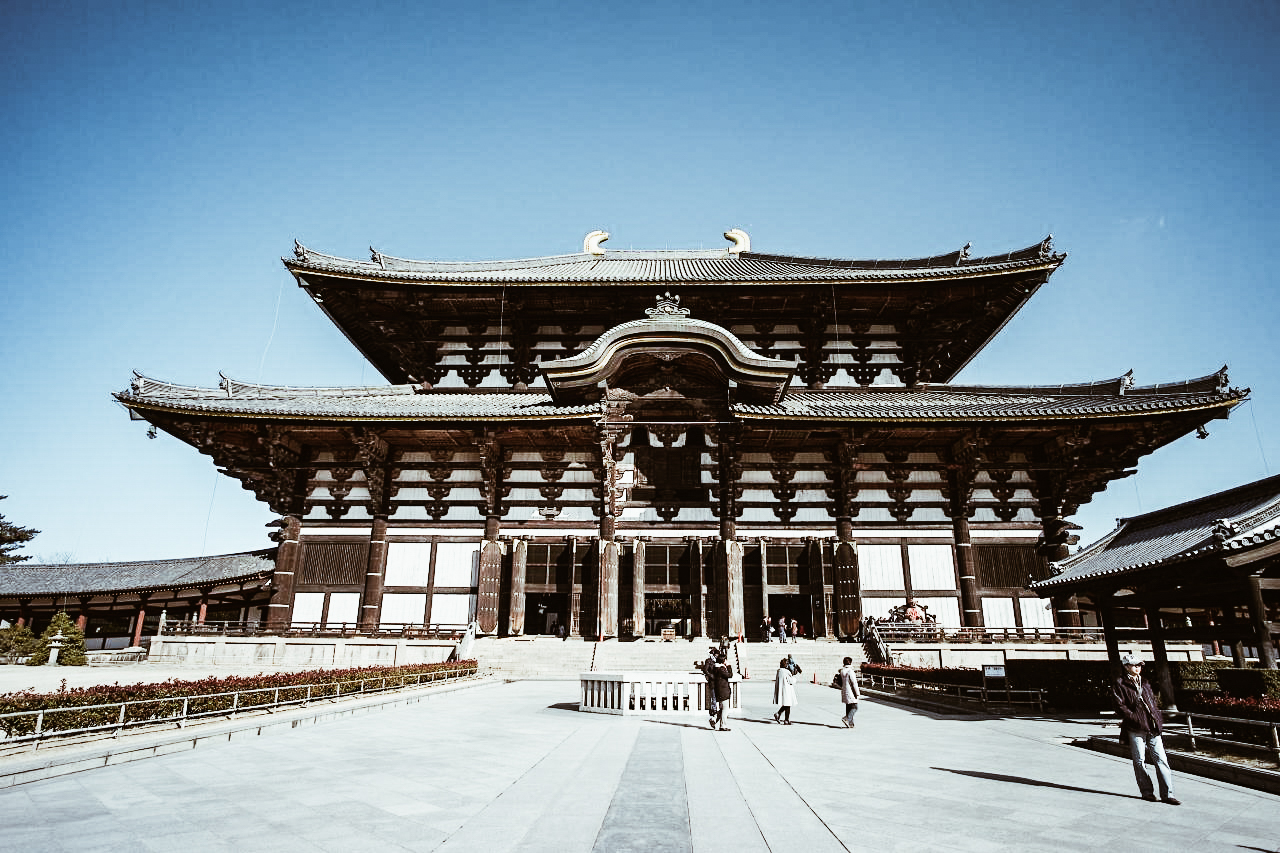
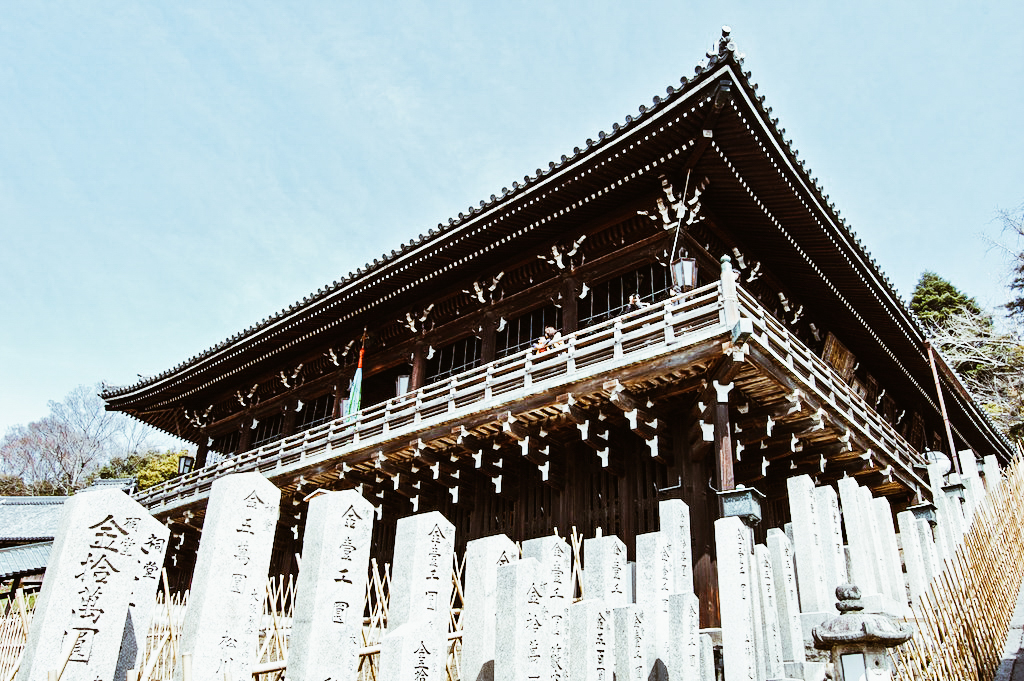
photo credits: Banalities, Josemspain
La Religione
Le sei scuole del buddismo di Nara, anche conosciute meglio come Rukushū (六宗) erano una setta accademica di Buddisti. Arrivati in Giappone dalla Corea e dalla Cina nel sesto e settimo secolo, erano controllate dal nuovo governo di Nara.
A causa del coinvolgimento del governo nell’espansione religiosa, troviamo la costruzione di diversi templi nella città. Uno di questi è il sito dei Sette Grandi Templi del sud di Nara. Tuttavia, queste sette miravano a diventare la scuola principale del buddismo della Casa Imperiale del Giappone e della sua nobiltà. A causa proprio della conformazioni di questi templi, le scuole sono state appunto definite le “Sei scuole del sud del buddismo di Nara”.

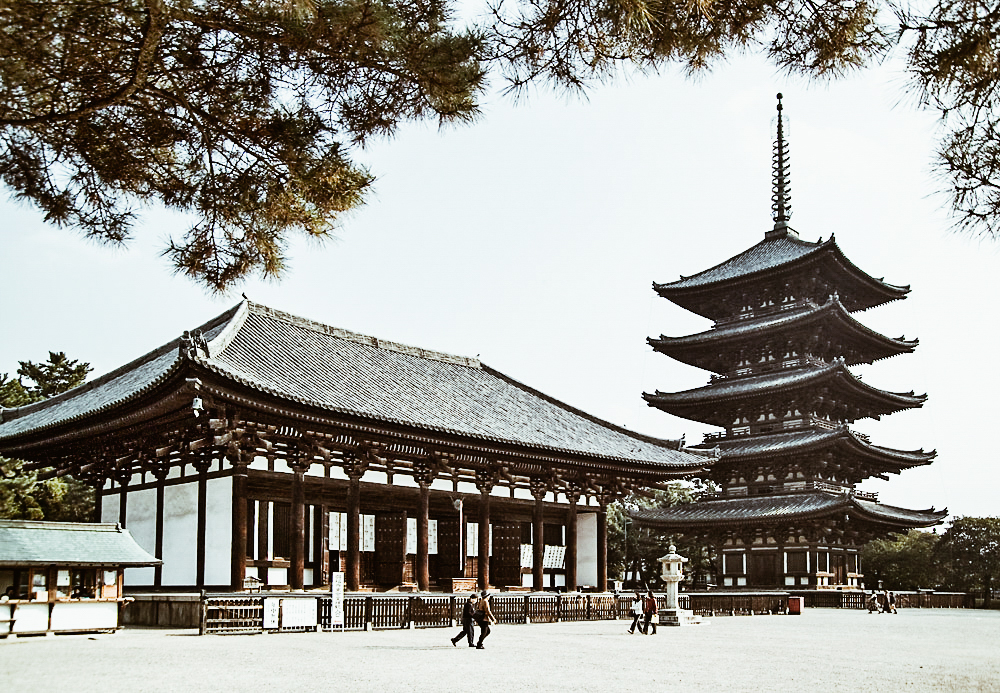
photo credits: wikipedia.it
I Templi
Avendo stabilito Nara come nuova capitale, anche il tempio del clan Soga fu rilocato. L’imperatore Shōmu ordinò la costruzione del tempio Tōdai-ji e della più grande statua di Buddah in bronzo.
I templi, conosciuti come i Nanto Shichi Daiji, rimasero spiritualmente importanti anche dopo lo spostamento della capitale nel 794. Infatti, Nara ricevette il sinonimo di Nanto (南都 “La capitale del sud”).

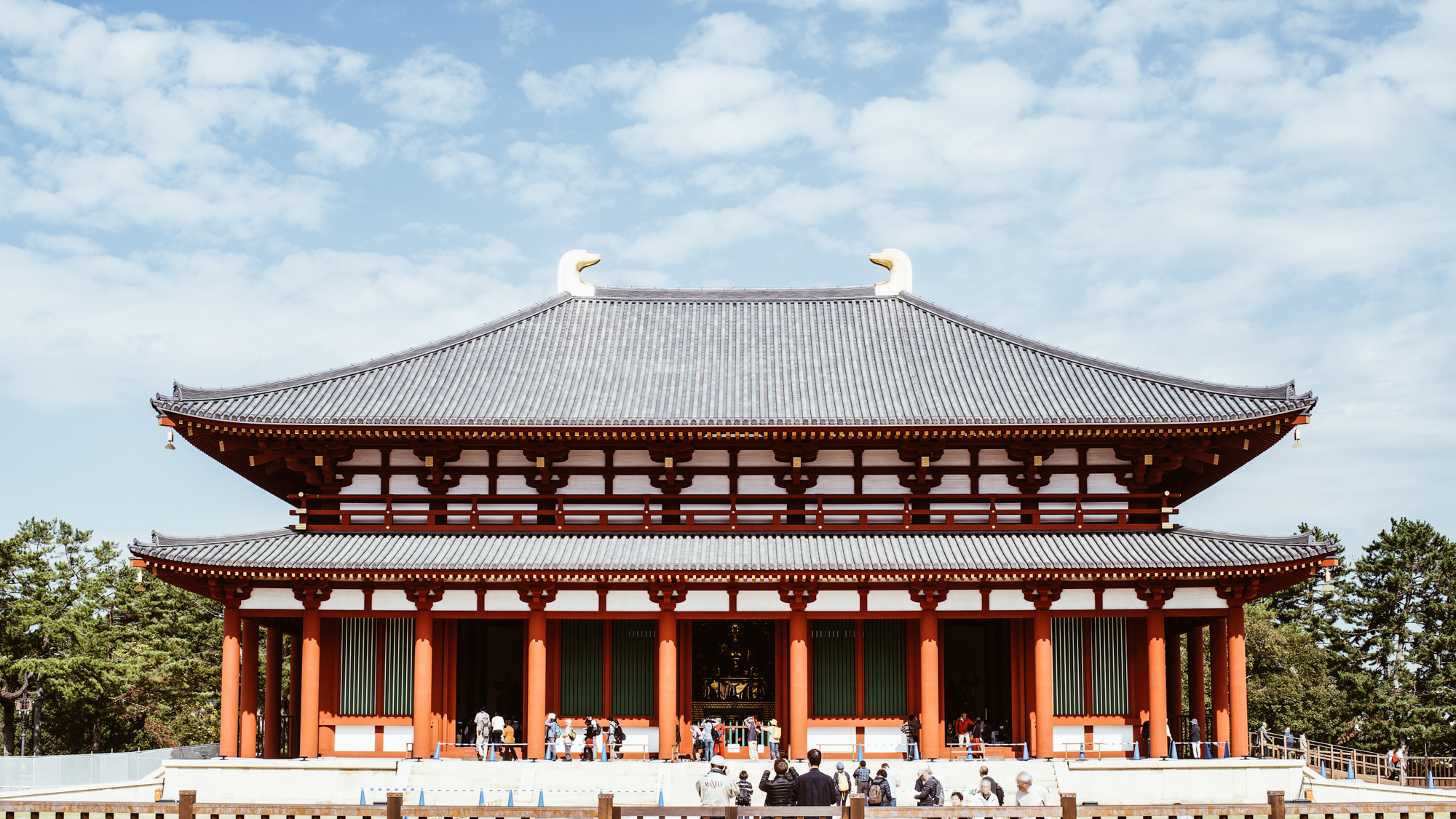
photo credits: wikipedia.it
Nanto Shichi Daiji
Letteralmente “i sette grandi templi della capitale del sud”, un nome storico comune che si riferisce al complesso di templi buddisti situati in questa città.
- Daian-ji (大安寺)
- Gangō-ji (元興寺)
- Hōryū-ji (法隆寺)
- Kōfuku-ji (興福寺)
- Saidai-ji (西大寺)
- Tōdai-ji (東大寺)
- Yakushi-ji (薬師寺)
Nara divenne una città turistica già nel periodo Edo. Infatti, questi anni videro la pubblicazione di diverse mappe per i visitatori della città.

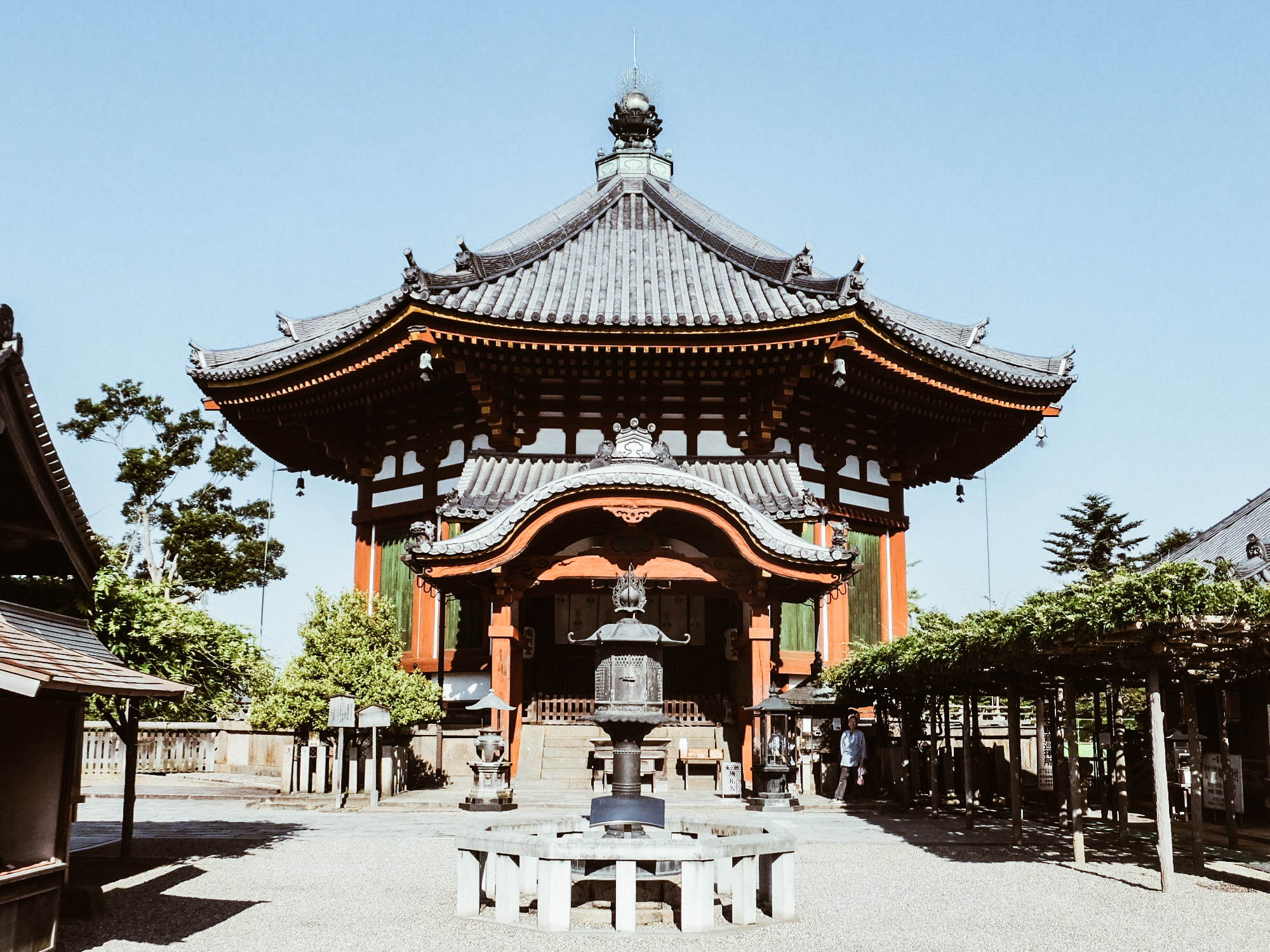
photo credits: wikipedia.it
La città Moderna
Nonostante sia stata capitale del Giappone dal 710 sino al 794, Nara divenne una città ufficialmente solo il 1 febbraio 1898. Da città di commercio del periodo Edo e Meiji, oggi Nara è una delle principale mete per i turisti grazie anche al suo ricco numero di monumenti. Inoltre, nel Dicembre 1998, la città divenne parte dei siti protetti riconosciuti dall’UNESCO come eredità dell’umanità.
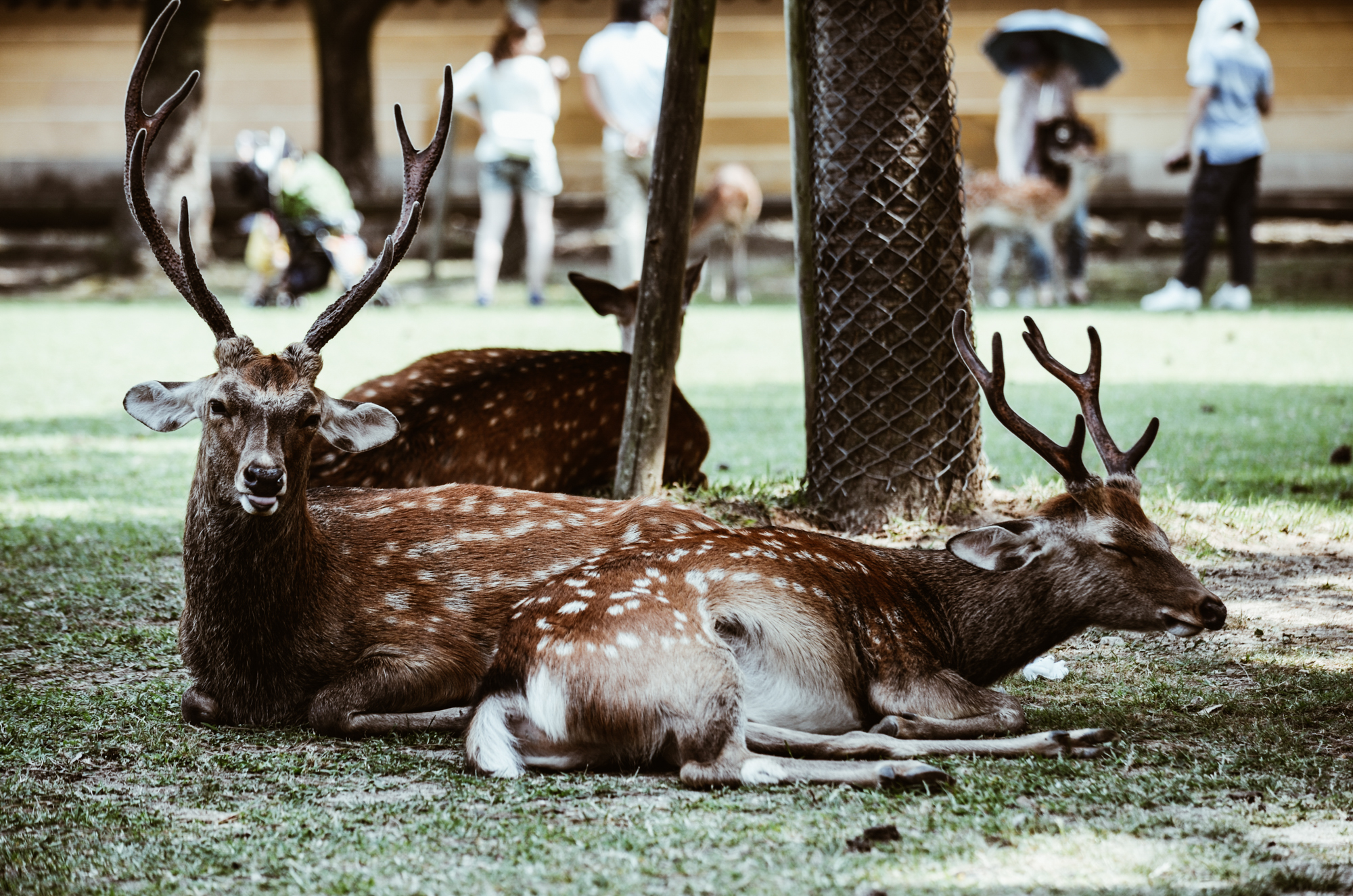

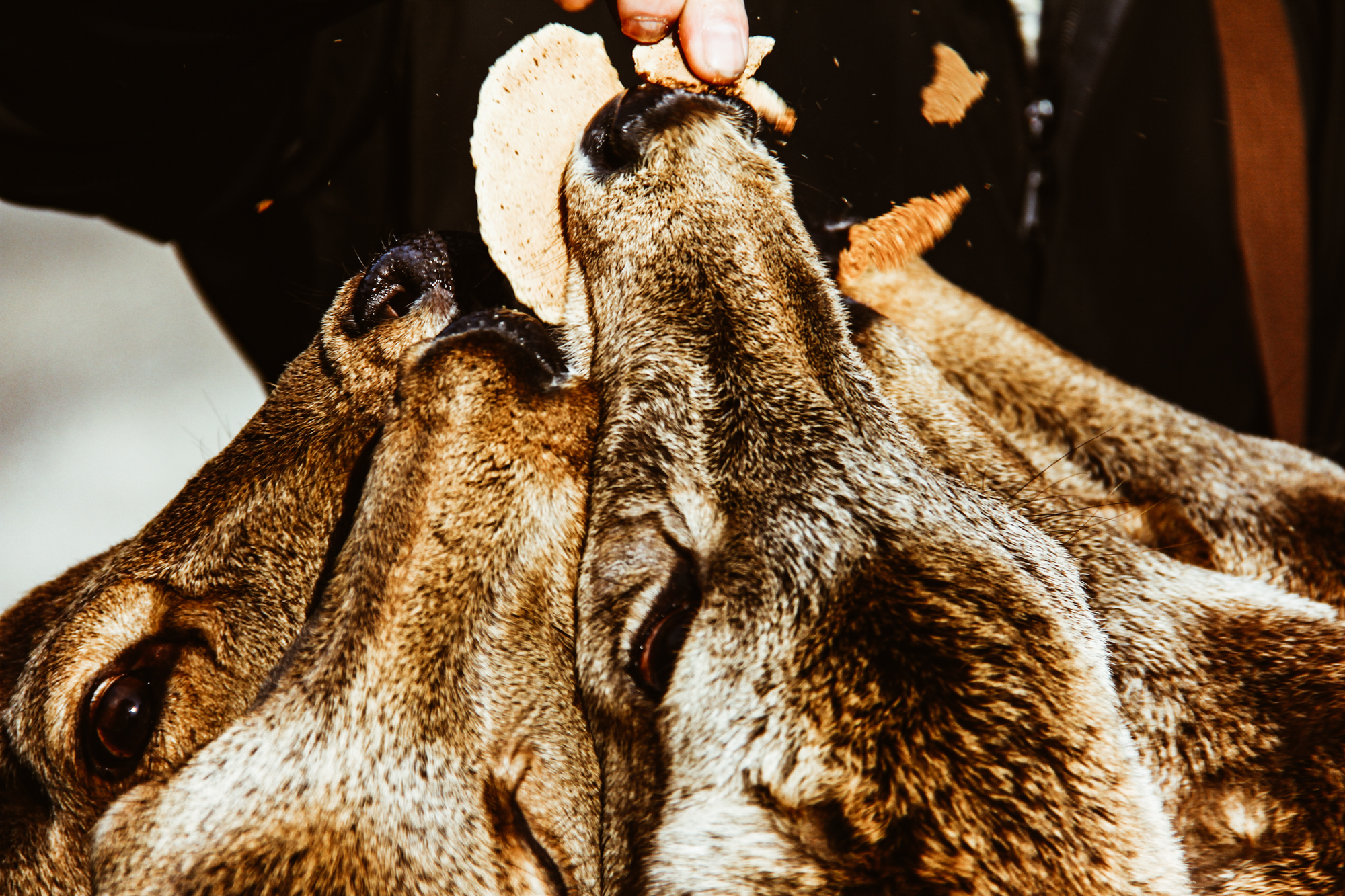
photo credits: GGzeOuf, Travis, Cesar I. Martins
Il parco e i cervi
Sicuramente, una delle mete più famose è il parco di Nara assieme ai suoi immancabili cervi. Questo, è un parco pubblico istituito nel 1880, situato ai piedi del monte Wakakusa. Sotto il controllo della Prefettura di Nara, questo magico posto è casa per oltre 120 sika o shika, i famosi Cervi di nara.
I visitatori infatti, possono camminare per i prati accompagnati da questi simpatici amici a quattro zampe classificati come “monumento naturale” dal Ministero dell’Istruzione, cultura, sport, scienza e tecnologia.
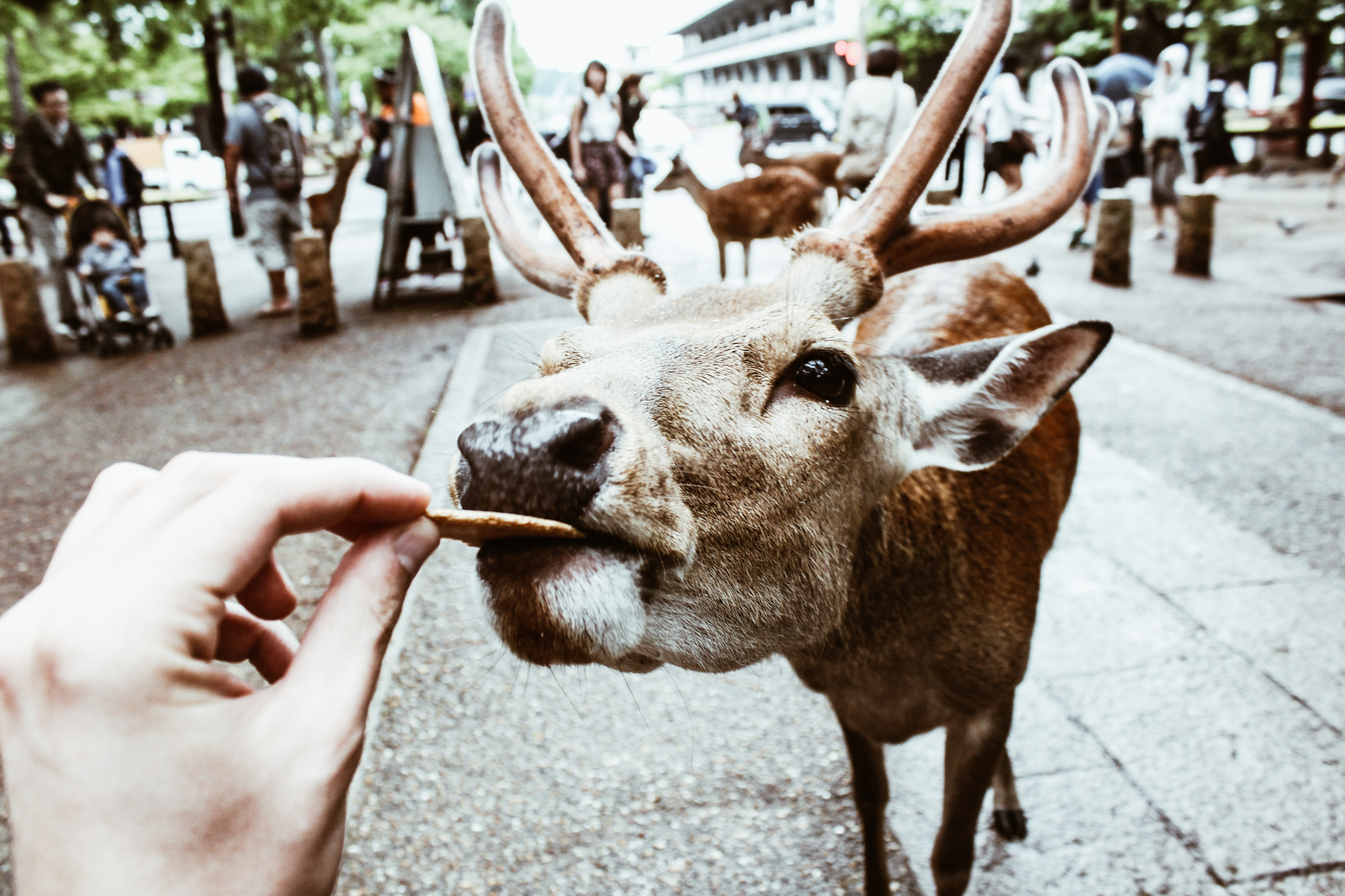
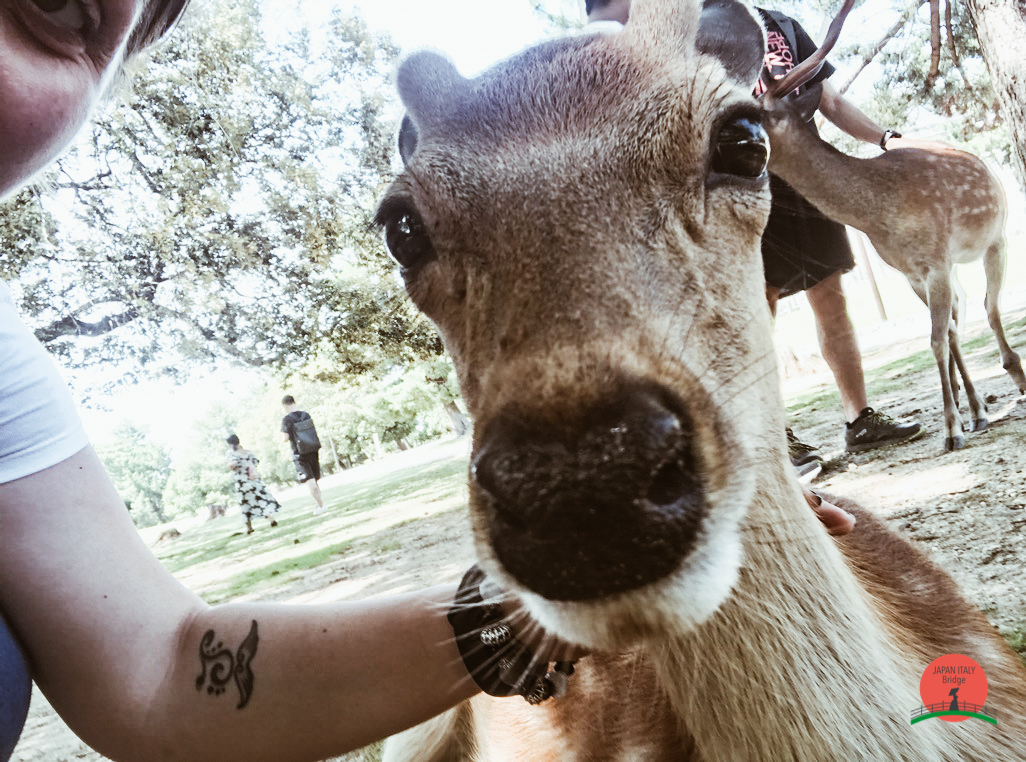

photo credits: Alberto Ortega, japanitalybridge.com
Secondo i locali, il cervo di quest’area era considerato sacro e il vassello ideale per una visita da uno dei quattro dei del santuario Kasuga, Takenomikazuchi-no-mikoto. Apparso sul monte Mikasa-yama, si dice fosse stato inviato da Kashima (Ibaraki) a cavallo di un cervo bianco.
Tutt’ora, questi cervi sono considerati simboli sacri e divini del santuario Kasuga e Kōfuku-ji. L’uccisione di uno di questi era considerata delitto capitale e punibile con la morte fino al 1637. Dopo la seconda guerra mondiale, il cervo fu ufficialmente spogliato dal suo stato di divinità e nominato “tesoro nazionale”, quindi soggetto a tutte le protezioni del governo.
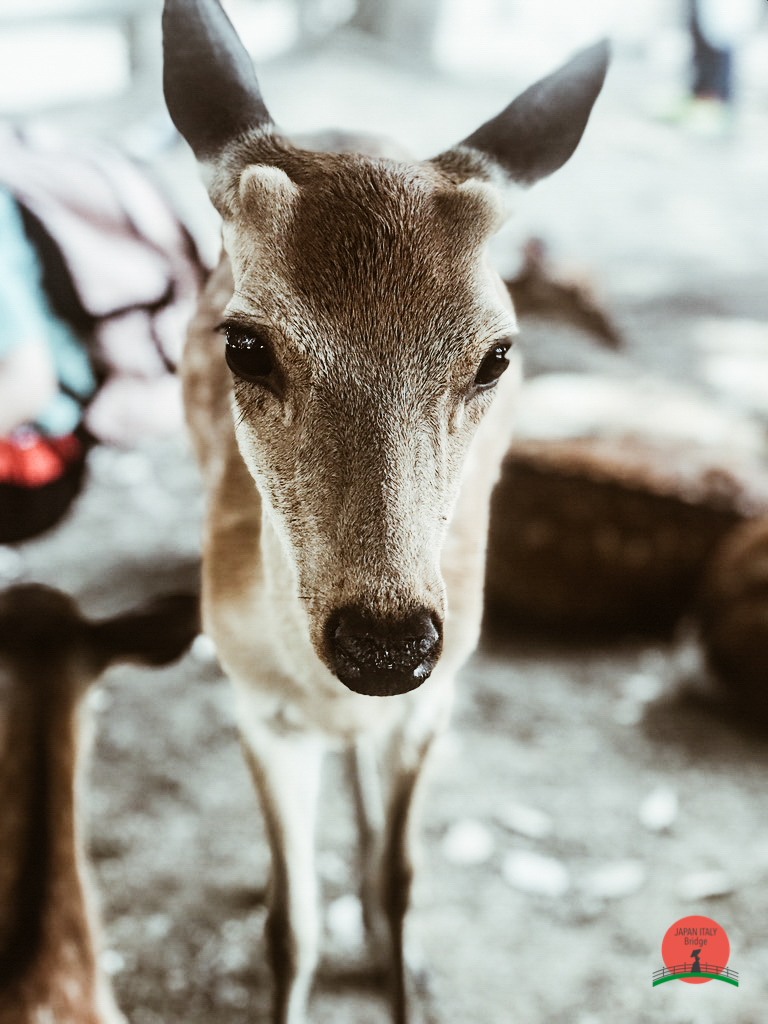
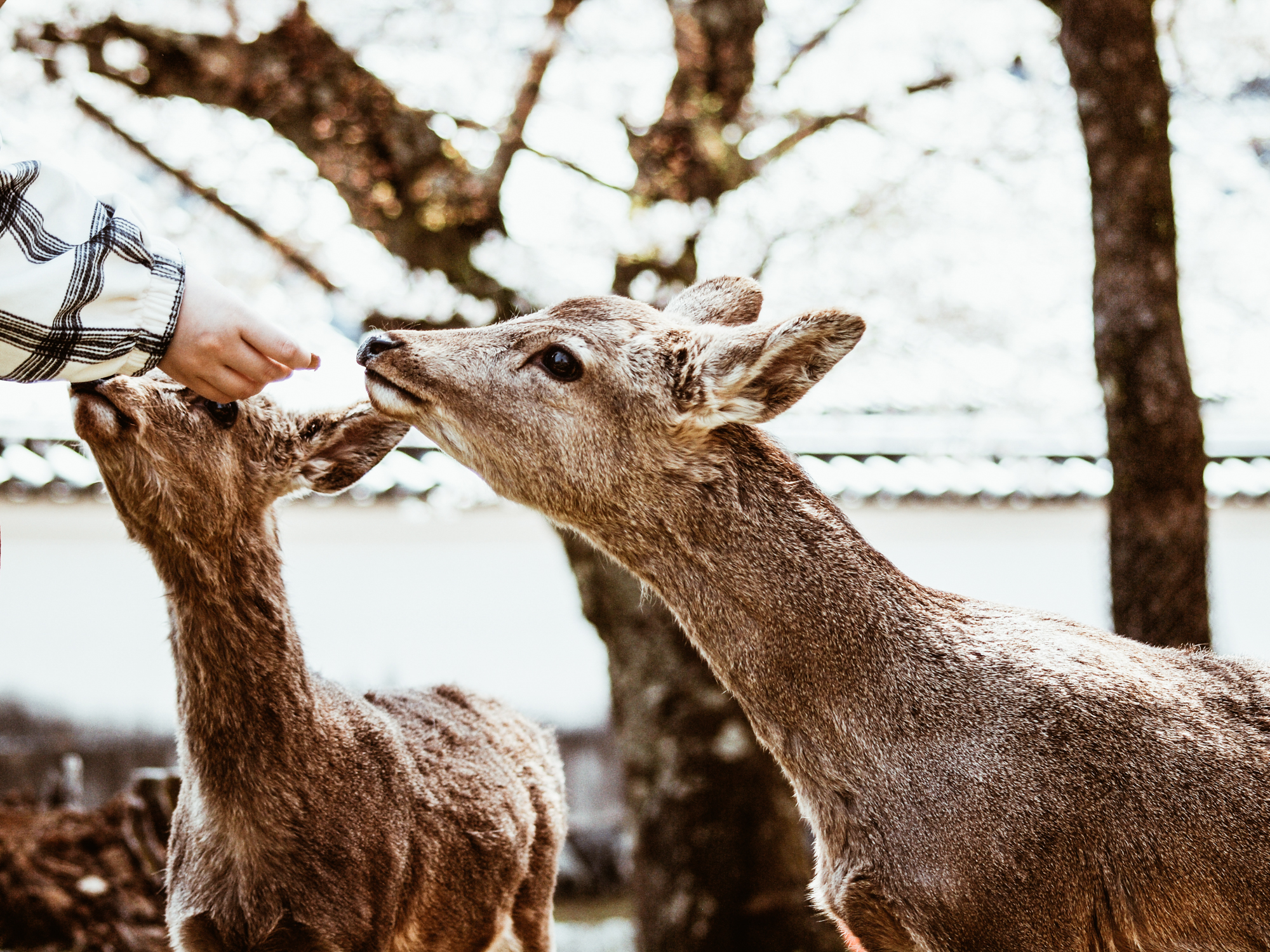


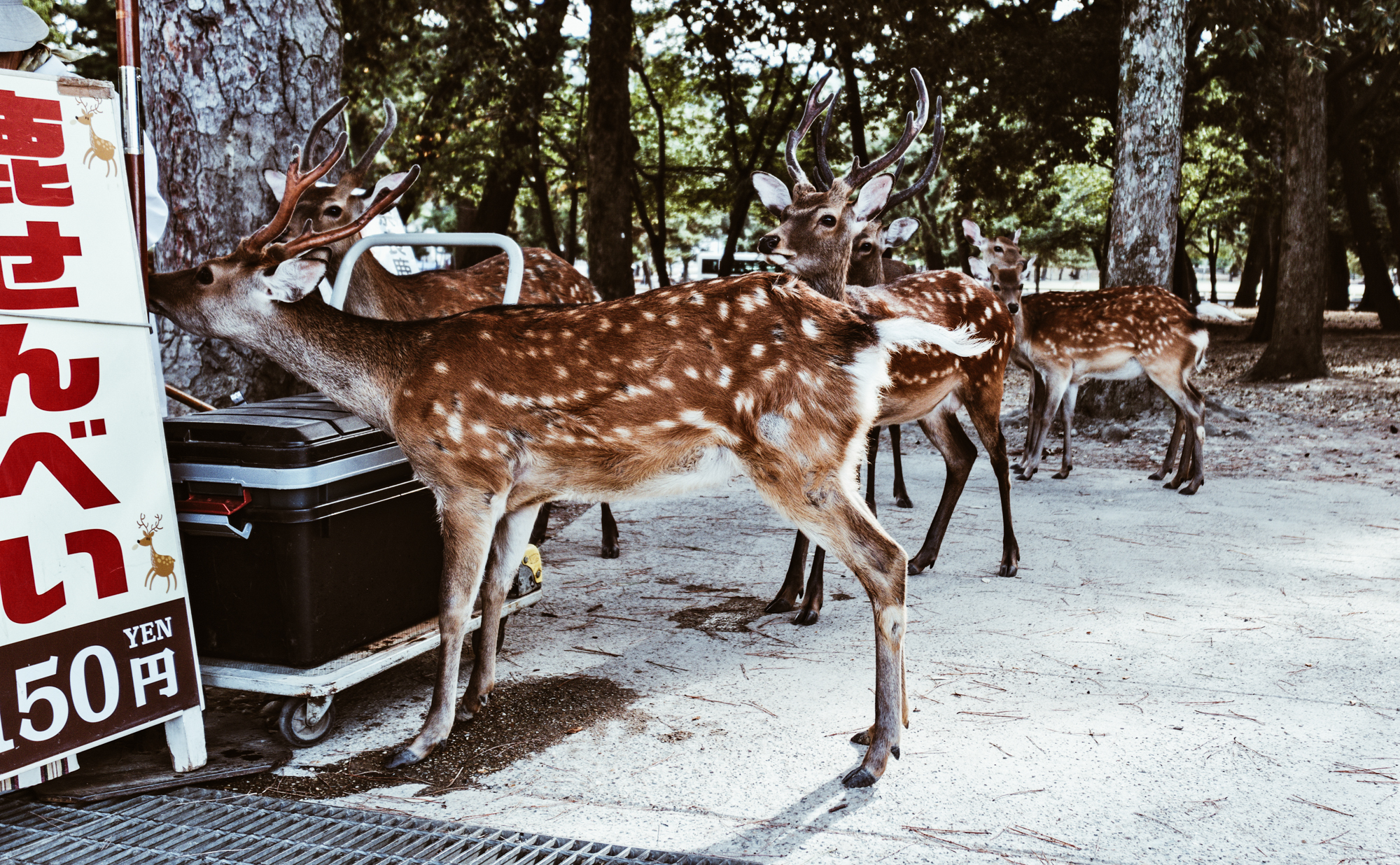
photo credits: japanitalybridge.com, coniferconifer, Bill Hails, Steffen Flor
Se passate per questa città, non potete perdere l’occasione di passare del tempo insieme a queste magnifiche creature. E’ possibile anche acquistare degli appositi biscotti per nutrire i famosi cervi di Nara. Essi vi ringrazieranno con un inchino, ma attenzione, l’ingordigia è dietro alla porta, attenti a non farvi mordere!
video credits: japanitalybridge.com
Condividi:
- Fai clic per condividere su Facebook (Si apre in una nuova finestra)
- Fai clic qui per condividere su Twitter (Si apre in una nuova finestra)
- Fai clic qui per condividere su Tumblr (Si apre in una nuova finestra)
- Fai clic qui per condividere su Pinterest (Si apre in una nuova finestra)
- Fai clic per condividere su Telegram (Si apre in una nuova finestra)
- Fai clic per condividere su WhatsApp (Si apre in una nuova finestra)
- Fai clic qui per condividere su Reddit (Si apre in una nuova finestra)
- Fai clic qui per stampare (Si apre in una nuova finestra)






